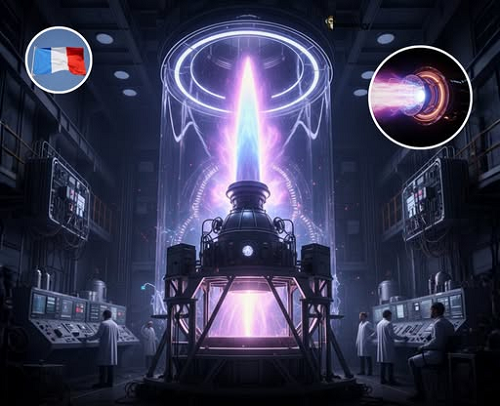In a development that could rewrite the future of aerospace and deep-space travel, French researchers have announced the creation of a groundbreaking, entirely new type of rocket engine. The revolutionary thruster operates purely on electromagnetic plasma, eliminating the need for any traditional chemical propellants, open flame, or even conventional moving mechanical parts.
The new technology, developed by a team at a leading French national research facility (details pending official confirmation), leverages fundamental physics to create thrust, moving beyond the constraints of the combustion engine.
- No Fuel Tank: The engine does not require chemical propellants (like hydrogen or oxygen) or even a working fluid like xenon or iodine used in current ion thrusters. The exact mechanism for generating the plasma without a traditional propellant source remains proprietary, but sources suggest it may interact directly with ambient air or the quantum vacuum.
- No Flame: Propulsion is generated by an invisible, contained electromagnetic field accelerating plasma, resulting in silent and non-polluting thrust.
- No Moving Parts: The core of the device is a static electromagnetic coil array, designed to eliminate the wear and tear associated with turbopumps, gears, and other mechanical systems in conventional or even electric propulsion.
While traditional chemical rockets rely on the violent combustion of fuel for a high, short-duration thrust (ideal for Earth launch), the new French engine is believed to produce a low-but-continuous force. This is precisely the kind of propulsion required for highly efficient, long-duration missions—making it an ideal candidate for orbit raising, maintaining satellite constellations, and, crucially, interplanetary travel.
“This is not just an incremental improvement; it is a paradigm shift,” a source close to the project stated. “By eliminating the mass of fuel and complex mechanical systems, we are clearing the main roadblocks to truly efficient long-haul space missions.”
The breakthrough immediately positions the European nation as a major innovator in the emerging field of advanced propulsion. If successfully scaled, the engine could dramatically lower the cost and increase the maneuverability of satellites and future spacecraft.
The next steps will focus on increasing the total thrust of the prototype and integrating the power source required to sustain the high-energy electromagnetic field. The development comes as global space agencies race to find a way to power faster, more economical missions to the Moon, Mars, and beyond.






